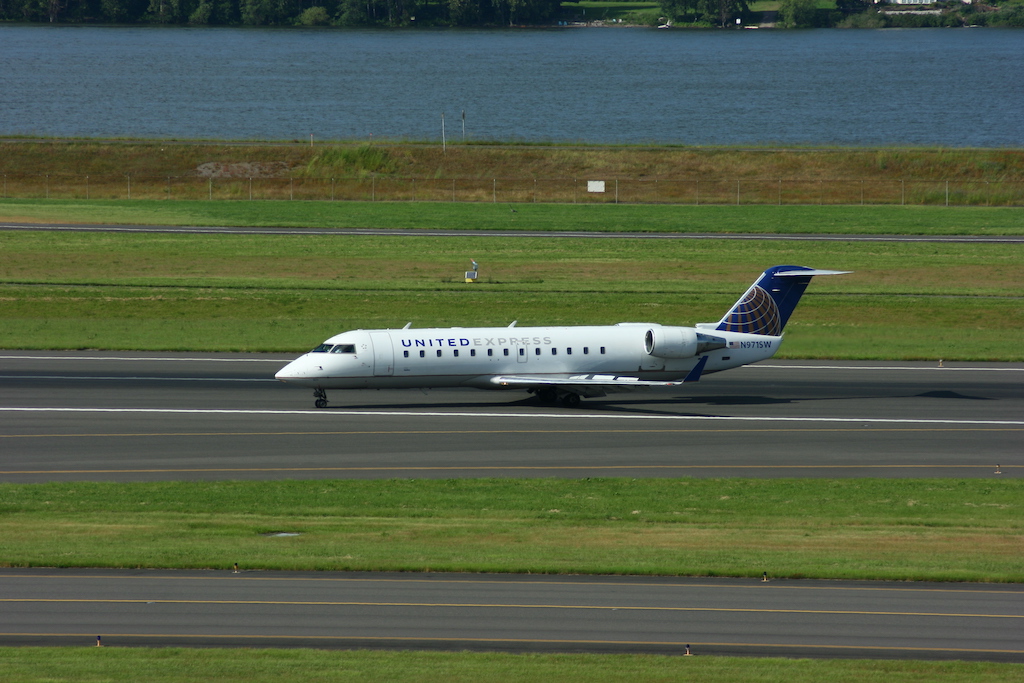Photo credit: United Airlines will exit eight smaller U.S. markets in January. Flickr / SoulRider.222
United Airlines will exit eight smaller U.S. markets in a somewhat surprising turn of events even as it adds more capacity and resumes flights. Is this due to a regional pilot shortage or is it an elaborate smoke and mirrors campaign? It may be both.
The Star Alliance carrier will end service to eight cities connected to its Chicago and Houston hubs in January: College Station and Killeen, Texas; Columbia, Mo.; Evansville, Ind.; Kalamazoo and Lansing, Mich.; Monroe, La.; and Wausau, Wis., according to Cirium schedules. And the news comes a week after United confirmed it would end flights to Twin Falls, Idaho, in November after just six months of service.
A United spokesperson said the cuts were “due to changes in the long-term sustainability of these routes.” The spokesperson cited the airline’s “overall network, fleet, resources at our regional partners and yields.”
However, several local reports from the affected destinations suggest that pilot staffing at United’s regional affiliates — in this case Air Wisconsin, CommutAir, and SkyWest Airlines — were to blame for the cuts.
“I’m not aware of any regional unable to meet capacity due to a shortage,” said Regional Airlines Association (RAA) President Faye Malarkey Black when asked about the United cuts. However, she added that mainline carriers — like United — are “recruiting heavily from regional partners to meet” staffing needs after pruning their workforces through voluntary outs in 2020.
Black’s comments echo those of regional airline CEOs. In October, SkyWest CEO Chip Childs said the airline’s main staffing challenge was hiring for administrative and ground positions, not for pilots or mechanics. This sentiment was echoed by other regional airline executives, although they all agreed that pilot staffing is a looming issue for the industry. A recent Oliver Wyman report found that North American airlines — particularly regional carriers, which are the entry-point to the industry for most crews — face a shortfall of nearly 10,000 pilots from the beginning of 2022 and rising through the decade. The shortfall comes after an abundance of pilots in 2020 and 2021.
This is not to say regionals did not shed pilots in 2020. Air Wisconsin lost a nearly half of its pilots last year for 422 crews at the end of 2020, the latest U.S. Bureau of Transportation Statistics (BTS) data show. SkyWest’s pilot ranks only shrank by 3 percent to 5,090 crews over the period. CommutAir was not included in BTS’ data for 2019.
It’s feasible that pilot staffing issues may be isolated to select carriers — like Air Wisconsin — and not broadly plaguing the industry or United’s affiliates. Air Wisconsin exclusively operates flights to four of the discontinued destinations, according to Cirium.
United CEO Scott Kirby said in October that the carrier’s supporting vendors — including truck drivers, wheelchair attendants, catering staff, security screeners, and airport restaurant staff — were facing staffing issues even as the airline itself was not. He did not mention United’s regional affiliates or give any indication that these workforce bottlenecks would — or could — cause operational disruptions.
“The infrastructure around aviation … we’ve had challenges — we haven’t really had them at United,” he said.
The mixed evidence to support a pilot shortage behind United’s market exits suggests something else may also be at play, as is often a case in the airline industry. Seven of the eight markets are served almost exclusively with the single-class 50-seat regional jets that the airline has said it will retire 200 of over the next five years. United has not outlined the retirement timeline for these aircraft, which Air Wisconsin also happens to exclusively operate.
Whatever the rationale behind the cuts, they will have little impact on United’s recovery from the pandemic. The eight cities combined amounted to a fraction of 1 percent of the airline’s system capacity in November, Cirium schedules show. And with 40 new Boeing 737 Maxes due next year, United can easily achieve its plan to fly 2019 domestic capacity levels next year even if it does remove a few 50-seat jets.
Special Offer: Choose From Quarterly or Annual Subscription Plans
{{monthly_count}} of {{monthly_limit}} free stories left to read
SubscribeAlready a member? Sign in here
You Need an Airline Weekly Susbcription to Read This Story
Your story count resets on {{monthly_reset}}
Already a member? Sign in here
